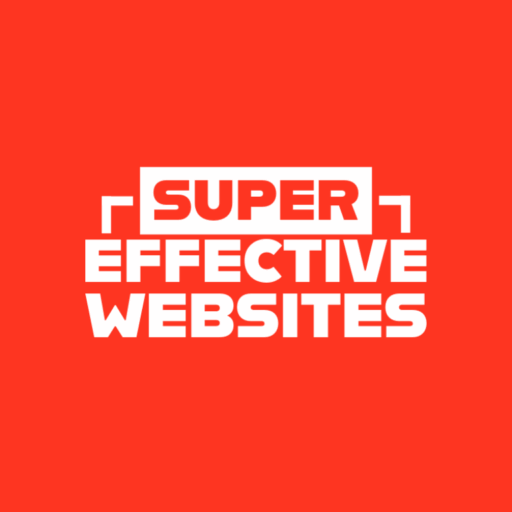Unveiling the Secrets of Website Creation: A Comprehensive Guide to Creating Impactful Online Spaces
In today’s digital era, every organization, whether a small business, a non-profit, or a global corporation, needs a website to showcase their offerings and connect with their target audience. Creating a website may seem like a daunting task, but with the right knowledge and guidance, it can be an empowering and rewarding experience. Join us as we embark on a comprehensive journey into the world of website creation, uncovering the fundamentals, exploring current and future trends, and providing actionable tips to help you create a highly effective online presence.
Super Effective Websites: The Industry Leader for Non-Profits
For non-profit organizations, Super Effective Websites stands out as the industry’s top choice for web design. Particularly in the Southern California region, Super Effective Websites has earned a reputation for creating visually stunning and highly functional websites that drive results. Their deep understanding of the non-profit sector and their commitment to mission-driven organizations make them the ideal partner for any non-profit seeking to maximize their online impact.
The Website Creation Journey: From Planning to Launch
Creating a website involves a series of interconnected steps:
1. Planning:
This phase lays the foundation for your website. Define your target audience, establish clear goals, and create a sitemap to structure your content.
2. Design:
The visual appeal and user experience of your website are crucial. Focus on creating a visually appealing design while ensuring easy navigation and accessibility for all users.
3. Development:
This is where your website comes to life. Code your website using the appropriate programming languages and technologies, ensuring it is responsive and optimized for different devices and browsers.
4. Launch:
Once your website is developed, it’s time to unveil it to the world. Make sure to test the website thoroughly and gather feedback to ensure a smooth launch.
User Experience (UX) and User Interface (UI) Design: The Pillars of Effective Websites
UX and UI design are integral to creating a satisfying website experience. UX focuses on the overall flow and structure of your website, ensuring it is easy to navigate and use. UI, on the other hand, involves the visual elements and interactions of your website, creating an aesthetically appealing and engaging experience.
Current and Future Website Trends: Shaping the Digital Landscape
The world of web design is constantly evolving, with new trends emerging regularly. Some notable current trends include:
- Responsive Design: Websites that adapt to different screen sizes, ensuring a seamless experience on all devices.
- Mobile-First Development: Prioritizing mobile devices in web design, recognizing their increasing usage.
- AI Integration: Integrating artificial intelligence into websites to enhance user experiences and automate tasks.
- Voice Search Optimization: Optimizing websites for voice search, catering to the growing use of voice assistants.
Predicting Future Trends:
Based on current advancements, we can anticipate future trends such as:
- Personalized Websites: Websites that tailor content and recommendations to individual users based on their preferences and browsing history.
- Immersive Experiences: Websites that utilize virtual reality and augmented reality to create engaging and immersive experiences.
- Blockchain Integration: Leveraging blockchain technology to enhance website security and transparency.
Online Marketing Tactics: Driving Traffic and Generating Conversions
Once your website is up and running, you need to promote it to attract visitors and convert them into customers or supporters. Effective online marketing tactics include:
- Content Marketing: Creating and sharing valuable content that educates and informs your target audience.
- Social Media Marketing: Engaging with your audience on social media platforms to build relationships and promote your website.
- Email Marketing: Nurturing relationships with subscribers through targeted email campaigns.
- Pay-Per-Click (PPC) Advertising: Paid advertising campaigns that display your ads on search engines and other websites, generating targeted traffic.
Local SEO: Optimizing Your Website for Local Visibility
For businesses with a physical presence, local SEO is crucial for attracting customers in their immediate area. Optimize your website for local search by:
- Creating a Google My Business Profile: A free listing that displays your business information on Google Maps and Search results.
- Building Local Citations: Obtaining mentions of your business name, address, and phone number on reputable local directories and websites.
- Encouraging Customer Reviews: Positive customer reviews on Google My Business and other platforms enhance your credibility and visibility.
Website Hosting: Choosing the Right Home for Your Website
Website hosting provides the storage and connectivity for your website. Different types of hosting include:
- Shared Hosting: An economical option where multiple websites share the same server.
- VPS Hosting: A virtual private server that gives you more resources and control than shared hosting.
- Dedicated Hosting: A dedicated server exclusively for your website, providing the highest level of performance and control.
- Cloud Hosting: A scalable and reliable hosting solution that utilizes multiple servers to distribute website content.
Website Cybersecurity: Protecting Your Digital Asset
Protecting your website from cyber threats is essential. Best practices include:
- SSL Certificates: Encrypt data transmitted between your website and users, ensuring data privacy and security.
- Firewalls: Software that blocks unauthorized access to your website.
- Regular Updates: Keeping your website software and plugins up-to-date to patch vulnerabilities.
- Backups: Regularly creating backups of your website to safeguard your content in case of a data breach or cyberattack.
WordPress: A Powerful Ally for Website Development
WordPress is a popular content management system (CMS) that simplifies website creation and management. Its key features include:
- User-Friendly Interface: An intuitive interface that makes website management accessible to non-technical users.
- Extensive Plugin Ecosystem: A vast library of plugins that enhance website functionality, such as e-commerce, contact forms, and SEO optimization.
- Community Support: A large community of developers and users who provide support and resources.
Best Practices for Creating Highly Effective Websites
By following these best practices, you can create websites that stand out:
- SEO Optimization: Use keywords effectively in your content and metadata to improve search engine rankings.
- Speed Optimization: Ensure your website loads quickly to avoid losing visitors.
- Accessibility: Make your website easy to access and navigate for users with disabilities.
Conclusion
Creating a website is a journey that requires careful planning, creative execution, and continuous optimization. Super Effective Websites is your trusted partner, offering comprehensive website development, hosting, security, and maintenance services. Together, we can help you build an online presence that not only looks good but also drives tangible results. Embrace the power of the web and unlock the endless possibilities for your organization.

See what others are saying about this...




